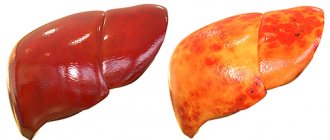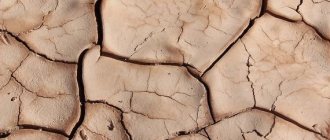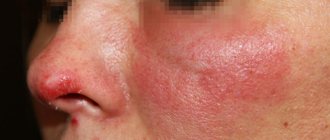The liver is the body's filter. It cleanses the blood of toxins, poisons, heavy metal salts, toxic bile pigments, breakdown products of alcoholic beverages and much more.
The patient’s skin condition directly depends on the detoxification function of the liver. If the gland works intermittently, the condition of the skin deteriorates greatly. Rashes, spider veins, areas of hyperemia, urticaria and much more may appear on it.
In addition, jaundice syndrome often develops against the background of liver and gallbladder pathologies. With it, the skin, eye sclera and mucous membranes change their color. Let's take a closer look at what symptoms can be used to recognize diseases of the hepatobiliary system and how the condition of the skin changes with them.
First - 3 real stories of our patients
Story 1: weight loss, expensive creams and gall bladder
Patient P., 36 years old. The new workplace places high demands on appearance. The patient went on a strict diet, went in for sports and lost 8 kg in a month. However, skin rashes have intensified - areas of redness, peeling, and acne have appeared. Treatment by a cosmetologist did not help, and even expensive skin products did not produce results.
On the advice of another dermatologist, the patient came for examination to a gastroenterologist-hepatologist. At the appointment, the patient recalled that while playing sports she sometimes felt a tingling sensation in her right side, but did not pay attention. The doctor ordered an ultrasound, which revealed changes in the gallbladder: due to irregular nutrition, it was spasmodic, thick bile began to accumulate, and this inhibited intestinal motility. The doctor prescribed treatment and recommended eating 4-5 times a day in small portions. Gradually the condition of the skin improved, the pain stopped bothering me.
Conclusion: competent cosmetologists know how the condition of the skin is connected with the functioning of internal organs. Therefore, it is often advised to consult a gastroenterologist if you have problem skin. Listen up, beautiful skin starts with health on the inside.
Story 2: Skin rashes and hepatitis
Patient K, 34 years old. I have never suffered from allergies. Suddenly, hives-like rashes appeared, which began to recur regularly. The patient repeatedly consulted an allergist and hematologist. Antiallergic drugs did not help at all. It got to the point where rashes began to appear for no apparent reason at all. The condition worsened, with weakness, drowsiness, and fatigue.
Noticing this, the patient came for examination to a gastroenterologist. The curator prescribed tests, ultrasound with elastography. Diagnosis: chronic hepatitis C, genotype 1a, stage 2 fibrosis. Upon further examination, Giardia was discovered - it was they that caused the rash on the skin. The patient completed the appropriate course of treatment and antiviral therapy, and the rash disappeared.
Conclusion: if you have rashes, do not rush to buy expensive medications and go on a strict diet. Often the reason is different. Check your liver and gallbladder.
Story 3: Itchy skin and cirrhosis of the liver
Patient O., 54 years old, contacted the EXPERT Polyclinic on the recommendation of a dermatologist with complaints of itchy skin. Long-term treatment by a dermatologist turned out to be ineffective, and a consultation with a gastroenterologist-hepatologist was scheduled.
The doctor found out that several years before the appearance of itchy skin, changes were detected in the biochemical blood test due to problems with the production and removal of bile from the liver. The patient worked with chemical fertilizers for many years. In addition, the gynecologist prescribed hormonal contraceptives, which she took for a long time, to normalize the menstrual cycle.
The patient was fully examined according to one of the comprehensive diagnostic programs, including a liver biopsy. Toxic and drug-induced hepatitis were excluded. All this helped establish the final diagnosis: primary biliary cirrhosis of the liver. The patient was prescribed bile acid preparations and treatment for skin itching. Now the patient feels well, the skin itching has disappeared, and the biochemical parameters of the liver are normal.
Conclusion: if your liver has been overloaded - you have been in contact with toxic substances, or have been taking medications for a long time - get examined periodically. This way you can catch a potentially dangerous disease at an early stage.
Skin reactions in liver pathologies
Xanthomas (liver plaques)
Let's look at what skin rashes are possible with liver disease. Let's start with xanthus. They appear very often in cirrhosis, fatty infiltration of hepatocytes, acute viral hepatitis, fibrosis.
Xanthomas occur due to lipid metabolism disorders. Their occurrence is largely associated with excess levels of low-density lipoproteins in the blood and high levels of total cholesterol.
The relationship between cholesterol metabolism and liver diseases is obvious, since it is the liver that produces cholesterol fractions and regulates lipid metabolism in general. Xanthomas look like yellow plaques.
There are five types of xanthoma:
- Xanthelasma of the eyelids. Most often observed. Outwardly, it resembles a yellowish soft plaque. Located around the eyes and on the eyelids.
- Flat xanthoma. It is yellow in color and looks like raised soft papules. It can be located in the armpits, on the palms, hands, and soles.
- Eruptive xanthoma. Rarely seen. This term refers to semicircular yellow papules that have clear boundaries and are very soft to the touch. Typically, eruptive xanthoma is located in the buttocks and back of the thigh.
- Tuberous xanthoma. The size of the plaque is from 1 to 5 centimeters in diameter. May have a yellow or brown tint. Inflammatory lesions are located on the elbows, knees, fingers, and buttocks.
- Tendon xanthomas. As the name suggests, plaques affect the extensor tendons of the fingers and the Achilles tendons. They have a dense structure and a yellowish tint, and are mobile during contraction and extension of the joints.
Erythema
What other skin rashes are possible due to liver disease, besides xanthomas? Erythema is very common. It appears as a result of helminthiasis, cirrhosis, acute viral and autoimmune hepatitis. Cholecystitis, cholangitis, and cancer of the gallbladder can also cause the symptom.
What is erythema? This term refers to limited intense redness of the skin, which develops due to dilation of the blood vessels of the dermis. In medical practice, erythema is considered not only as a symptom of allergies. The occurrence of this symptom is very often preceded by diseases of the hepatobiliary and genitourinary systems.
Erythema can affect the face, leg, hands, arms and any other part of the body. The amount of redness will depend on the extent of liver damage. By the way, erythema is often a consequence of acute and chronic intoxication of the body.
Redness may appear due to prolonged exposure to cold, ultraviolet radiation, and radiation. What erythema can look like is shown in the photo.
Ulcers
When considering the types of skin rashes in liver diseases, you need to dwell on the so-called ulcers. Doctors call them abscesses. An abscess is a purulent inflammation of tissues with their melting and the formation of a purulent cavity.
Outwardly, it resembles a black or brown plaque. Around the area of inflammation, redness, hyperemia, and dry skin are observed. The abscess itself can be very itchy. The development of edema is possible. The skin involved in the inflammatory process may become “oily.”
Most often, ulcers appear due to:
- Acute viral hepatitis A and B.
- Liver cirrhosis.
- Liver failure.
- Fibrosis.
- Fatty hepatosis.
- Acute intoxication.
Ulcers are treated surgically. Physiotherapeutic measures are also used. After removing the abscess, bandages with Levomekol are applied to the skin.
Spider veins
In addition to irritation, erythema, cassanthomas, hemorrhagic rash, acne and allergic reactions, with liver diseases the formation of spider veins on the skin is possible. Stars are not a rash.
Scientifically speaking, spider veins are a locally expanded capillary network that appears through the skin. Outwardly, it resembles a red or purple cobweb. The defect is most often located on the cheeks, wings of the nose, lower and upper extremities. Spider veins appear frequently during pregnancy and in older people. Also, the deviation often develops in men and women suffering from diseases of the hepatobiliary system.
As a rule, the appearance of spider veins is preceded by cirrhosis, since it disrupts the functionality of the liver, malfunctions in the hematopoietic system develop, and portal hypertension and other vascular disorders are noted.
You can eliminate spider veins using:
- Electrocoagulation.
- Sclerotherapy.
- Laser photocoagulation.
- Surgitron device.
- Ozone therapy.
Hemorrhagic and acne rash
Hemorrhagic rash in liver diseases is observed very often, especially in autoimmune hepatitis and cholangitis, viral hepatitis. This rash is non-inflammatory in nature.
Outwardly, it appears as small granular spots of red or brown color. There are 3 types of hemorrhagic rash: petechiae, purpura, ecchymosis. They differ in the diameter of the rash. Ecchymoses with a diameter of more than 3 mm are considered the largest.
A diseased liver can also cause acne. It is quite rare. As a rule, acne on the skin occurs due to the acute course of viral hepatitis. But their appearance cannot be ruled out in non-infectious pathologies of the hepatobiliary system. Acne often occurs when the liver is damaged by helminth infections. The rash is dark red or black in color. Acne has a way of accumulating into large conglomerates.
Dark spots
Hyperpigmentation develops due to the fact that melanin is unevenly distributed in the human skin. It is this substance that gives the skin its specific color. Pigment spots are large, uneven in shape, and appear suddenly. It is extremely difficult to get rid of them.
According to experts, the appearance of age spots is the first “alarm bell” that indicates that the liver or other organs of the gastrointestinal tract are not in order. Skin pigmentation is impaired in diseases such as:
- Cholecystitis (any form).
- Cirrhosis.
- Fatty hepatosis.
- Fibrosis.
- Liver failure.
- Gilbert's syndrome.
- Cholangitis.
- Hemochromatosis.
- Steatohepatitis.
- Dubin-Johnson syndrome.
- Cholelithiasis.
- Hepatosplenomegaly.
- Liver or gallbladder cancer.
- Hepatitis of any etiology.
The color of age spots varies from light to dark brown. If there are abnormalities in the functioning of the liver, even chloasma or melasma - large pigment spots - can form on the skin. They have an irregular shape and tend to merge.
What does the skin have in common with the liver?
One of the many tasks of the liver is to remove waste products from the body. If for some reason the liver cells stop doing this job, the secretion increases through the skin. This manifests itself as rashes, changes in skin color, etc.
Check your liver if you see:
- early age-related changes - fatty hepatosis, hepatitis of various origins
- blood dew (Tuzhilin syndrome) is a sign of a number of diseases of the liver, gallbladder and pancreas (photo No. 1)
- vesicles and papules - often appear during an autoimmune process in the liver and viral hepatitis (photo No. 2)
- acne – fatty liver degeneration and cell inflammation – non-alcoholic steatohepatitis
- spider veins (so-called spiders) - frequent signs of hepatitis, cirrhosis, fatty hepatosis, alcoholic liver disease (photo No. 3)
- jaundice is a sign of the release of bile pigments into the blood due to a mechanical obstruction to the outflow of bile or damage to liver cells (photo No. 4)
- liver palms - appears due to the accumulation of estrogen in cirrhosis
- excoriation - scratching due to itching of the skin in hepatitis and cirrhosis
- urticaria - although not directly related to the liver, it may indirectly indicate increased allergization caused by a disease in this organ
- bruises without visible injury are a sign of bleeding disorders, pancreatic diseases
- white spots on the nails, cracks in the corners of the mouth - a sign of vitamin deficiency, anemia, intestinal diseases
- stretch marks (striae) - often appear with the accumulation of fluid and an increase in the volume of the abdominal cavity in cirrhosis
- enlarged abdomen and “jellyfish head” - ascites and dilation of the subcutaneous veins of the abdominal cavity - signs of liver cirrhosis and portal hypertension, also found in cancer of internal organs (photo No. 5).
What liver diseases cause rashes and jaundice?
Before we look at what rashes on the skin look like due to liver disease, let’s find out what deviations cause the condition of the skin to change. Most often, a rash and other changes in the skin appear due to helminthiasis.
Various parasites can live in the liver. As a rule, Giardia, amoebas, echinococci, schistosomes, liver flukes, and roundworms settle in it. Under the influence of parasites, local inflammatory processes develop, the detoxification function of the liver is disrupted, and rashes of various types appear on the skin. Itching, burning, hyperemia and urticaria are noted.
In addition to helminthiasis, the following diseases can provoke a rash and other abnormalities:
- Viral forms of hepatitis (A, B, C, D, E, G). Liver rash is accompanied by high body temperature, hepatomegaly, dyspeptic disorders, and asthenovegetative syndrome.
- Cirrhosis of the liver. The degeneration of healthy liver cells into connective tissue leads to the patient constantly experiencing skin itching, burning, and hyperemia. Bruises, xanthelomas, and spider veins form on the skin. The color of the skin changes, the tactile and temperature sensitivity of the limbs is impaired.
- Vascular disorders of the liver. The causes of the rash may be vascular thrombosis, hepatic artery occlusion, or portal hypertension.
- Hereditary pathologies - hemochromatosis, Gilbert's syndrome.
- Autoimmune liver diseases. These include the autoimmune form of hepatitis, autoimmune cholangitis, and primary sclerosing cholangitis.
- Intoxication of varying severity.
Injuries to the abdominal cavity and organs of the hepatobiliary system can provoke skin disorders.
What to do if you notice changes in your skin?
Step 1. Consult your doctor and get an individual examination plan - biochemical tests - ALT, AST, bilirubin, alkaline phosphatase, GGTP, markers of viral hepatitis, immunological tests, ultrasound, and others, according to the doctor’s recommendations. Step 2. Find out the test results, diagnosis and prognosis of the disease. Step 3: Obtain a treatment plan that takes into account comorbidities.
Don't wait until your skin condition gets worse. Check your liver. In the early stages, recovery can be achieved. And the specialists of the EXPERT Polyclinic - hepatologists and dermatologists with extensive experience - will be happy to help. Health and beauty to your skin!











